10 the most famous paintings in the world

These are the world’s 10 most searched-for paintings:
1.”Mona Lisa”
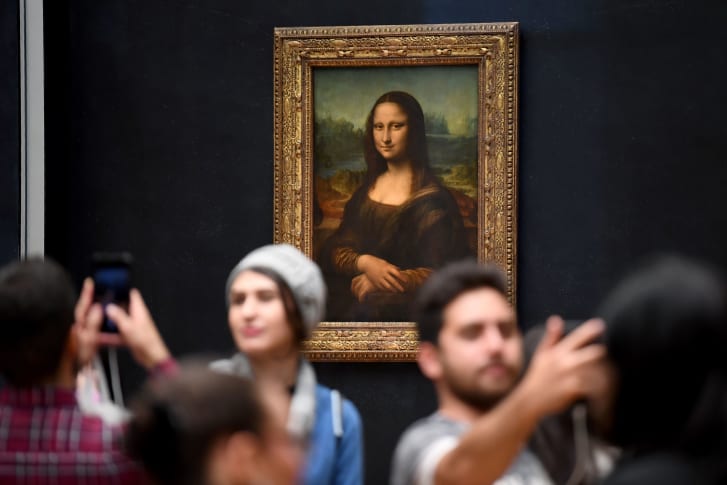
Artist: Leonardo da Vinci
Estimated date: 1503 to 1519
Where to see it: Louvre Museum (Paris)
It shouldn’t be a surprise that the most well-known painting in the entire world depicts the enigmatic woman with the seductive smile. But that’s one of the few things about this piece of art that is certain.
Although experts aren’t certain, the sitter in the artwork is supposed to be Lisa Gherardini, the wife of Florence businessman Francesco del Giocondo. The painting is the oldest known Italian portrait to focus so intensely on the sitter in a half-length portrait, according to the Louvre, where it was initially displayed in 1804. It did constitute an artistic revolution.
Did you know? According to historians, the “Mona Lisa” was not well known outside of the art world before the 20th century. However, an ex-Louvre employee stole the portrait in 1911 and kept it hidden for two years. The theft introduced millions of people to Renaissance art and contributed to the painting’s enduring presence in popular culture.
2. ‘The Last Supper’
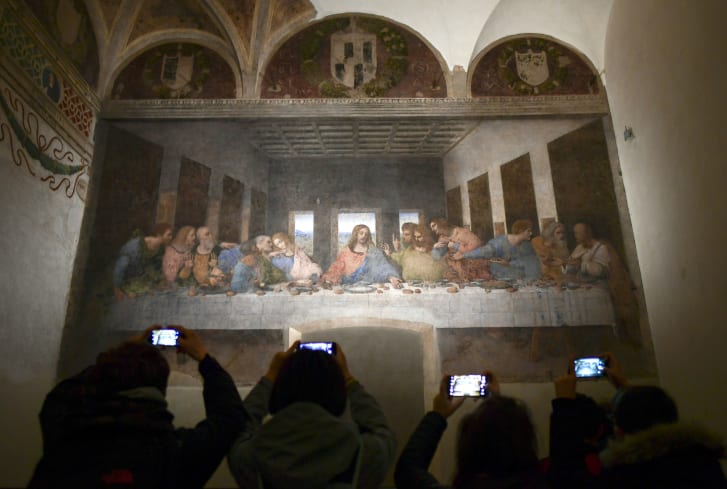
Artist: Leonardo da Vinci
Estimated date: 1495 to 1498
Where to see it: Santa Maria delle Grazie (Milan, Italy)
The only artist to make this list twice is Leonardo, who is considered to be the first “Renaissance Man.”
The Last Supper is a painting that represents the final meal that Jesus shared with his followers before he was crucified. It was created during a time when religious imagery was still a popular artistic theme.
4.6 meters (15 feet) high and 8.8 meters (28.9 feet) broad, the painting is actually a massive fresco that makes for an impressive sight.
Continuity of Leonardo da Vinci’s legacy.
Did you know? The refectory wall where the fresco was created was used as target practice by Napoleon’s forces, yet the fresco has withstood both of those dangers. When the top of the Dominican monastery of Santa Maria delle Grazie in Milan was devastated by bombs during World War II, it was also exposed to the air for a number of years.
3. ‘The Starry Night’
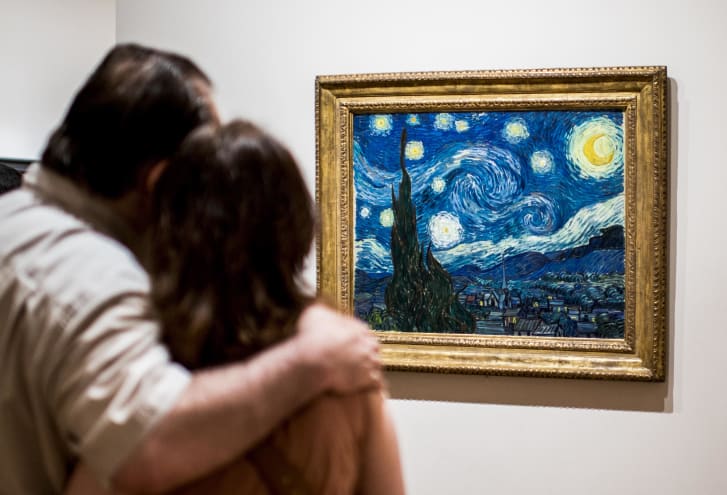
Artist: Vincent van Gogh
Date: 1889
Where to see it: Museum of Modern Art (New York City)
The comparably abstract artwork serves as the emblematic illustration of van Gogh’s daring and inventive application of heavy brushstrokes. Art aficionados have been captivated by the painting’s brilliant blues and yellows as well as the dreamy, swirling mood for decades.
Did you know? When he created “The Starry Night,” Van Gogh was receiving treatment for his mental condition in a hospital in Saint-Rémy, France. The scene outside his window in his room gave him inspiration.
4. ‘The Scream’
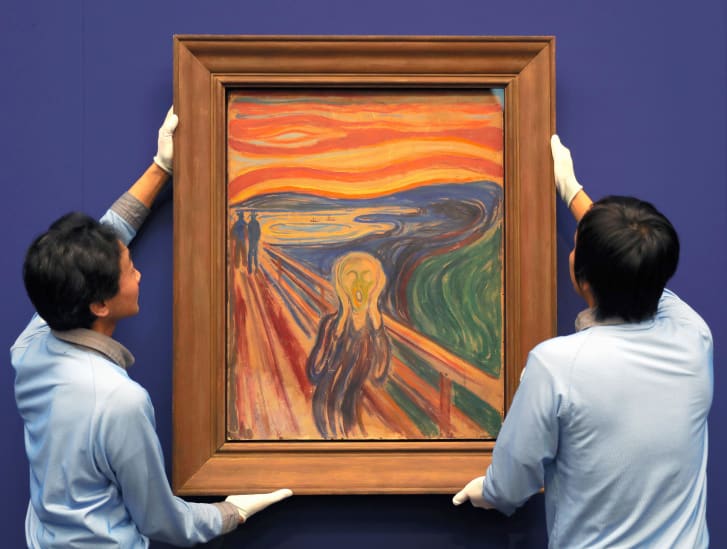
Artist: Edvard Munch
Date: 1893
Where to see it: National Museum (Oslo, Norway — opening in 2020) and Munch Museum (Oslo — through May 2020)
Let’s get one thing out of the way: “The Scream” is not a single piece of art. There are two paintings, two pastels, and then an unknown number of prints, according to a British Museum blog. The artworks are housed at the National Museum and the Munch Museum, and one of the pastels was auctioned off in 2012 for about $120 million.
Did you know? Instead of screaming, the androgynous figure in the foreground of the Art Nouveau-inspired picture is attempting to drown out a piercing screech coming from nature. It was based on a genuine encounter Munch had during a stroll at dusk in Oslo, when a striking red glow overpowered his senses.
5. ‘Guernica’
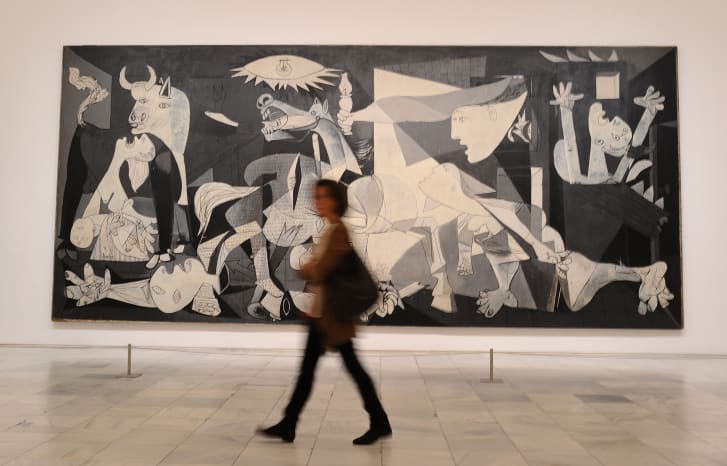
Artist: Pablo Picasso
Date: 1937
Where to see it: Museo Reina Sofía (Madrid)
he newest painting on this list, it shows the German aerial bombardment of the Basque town of Guernica during the Spanish Civil War.
With its characteristic Picasso technique and brutal depiction of the horrors of war, the painting became a crucial element of 20th-century culture and history.
Did you know? During World War II, “Guernica” was relocated to the Metropolitan Museum of Modern Art in New York for security. Picasso asked for the visit to be prolonged until democracy was restored in Spain. In 1981, six years after the long-time Spanish dictator Gen. Francisco Franco passed away, it returned to Madrid.
6. ‘The Kiss’

Artist: Gustav Klimt
Estimated date: 1907 to 1908
Where to see it: Upper Belvedere museum (Vienna, Austria)
Byzantine artistic influences can be noticed in the highly ornamental robes worn by the passionate, life-sized pair and are a product of Klimt’s “Golden Period.”
The Upper Belvedere says that with “The Kiss,” Klimt makes a “general allegorical statement about love being at the heart of human existence.” Given its magnetic appeal, it seems people agree.
Did you know? While “The Kiss” isn’t for sale, other Klimt pieces are, and they fetch astronomical prices. In 2016, Oprah Winfrey sold the “Portrait of Adele Bloch-Bauer II” painting from 1907 for $150 million, making a tidy $60 million profit.
7. ‘Girl With a Pearl Earring’
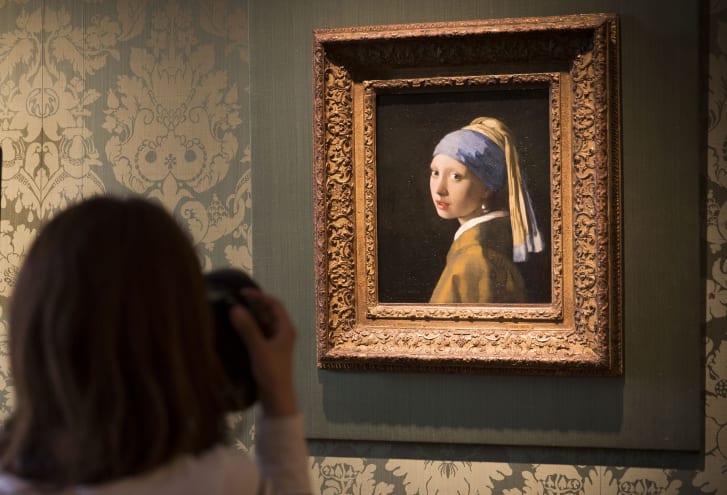
Artist: Johannes Vermeer
Estimated date: 1665
Where to see it: Mauritshuis (The Hague, Netherlands)
This fascinating fan favorite is frequently compared to “Mona Lisa.” In addition to the artistic variances, “Girl With a Pearl Earring” isn’t even a portrait in the strictest sense; rather, it’s a “tronie,” which is Dutch for a painting of an imagined subject with exaggerated characteristics.
The masterpiece’s simplicity is what makes it so beautiful on oil on canvas. The only thing in focus is the girl, who is sporting a blue and gold turban and an enormous pearl earring. The background is completely dark.
Did you know? “Girl With a Pearl Earring” went on tour in the US, Italy, and Japan from 2012 to 2014 while the Mauritshuis was being renovated. It attracted sizable audiences, enhancing its reputation as one of the most well-known works of art in the entire globe.
8. ‘The Birth of Venus’
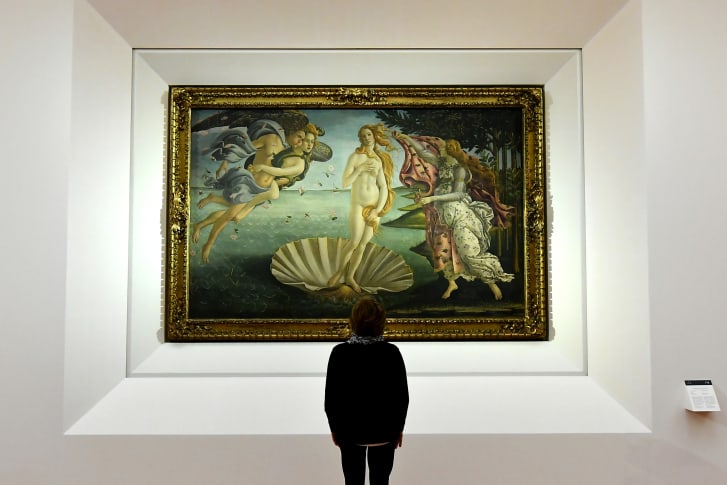
Artist: Sandro Botticelli
Estimated date: 1485
Where to see it: Le Gallerie Degli Uffizi (Florence, Italy)
The Birth of Venus, the oldest picture in the top 10 and rival to “The Kiss” for most sensual, was probably commissioned by a wealthy and art-loving member of the Medici family, which governed Florence and the surrounding regions for centuries.
With the Goddess of Love emerging from a massive scallop shell, Botticelli created an iconic figure that combines a resurgence of interest in classical Greek culture with Early Renaissance design.
Did you know? Two notable differences between “Venus” by Botticelli and the majority of his contemporaries’ paintings may be seen.
He began by using canvas as opposed to the more common wood to paint on. Second, it was audacious that Venus was entirely exposed, with only a hand (barely) covering her most personal body at the time because nudity was uncommon.
9. ‘Las Meninas’
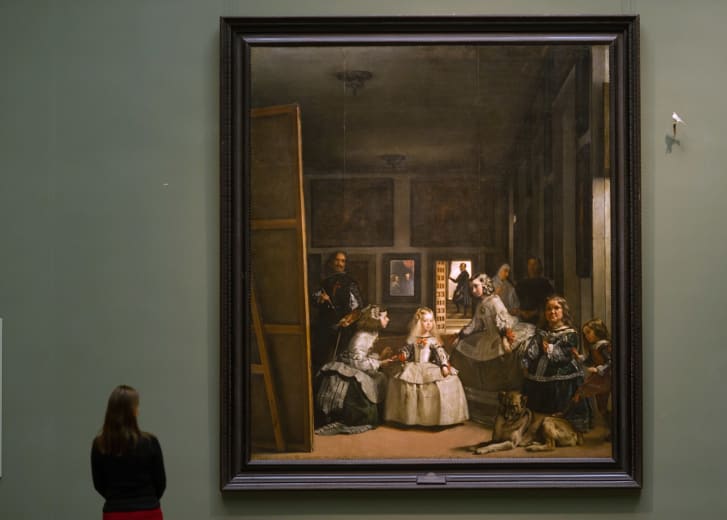
Artist: Diego Velázquez
Date: 1656
Where to see it: Museo del Prado (Madrid)
Madrid is the only city in this list where two of the top ten paintings can be found, with “Las Maninas” at No. 9 and “Guernica” at No. 5 respectively.
Diego Velázquez’s “Las Meninas,” one of his largest paintings, is housed at the well-known and sizable Prado. It is also one of his most well-known works. Art critics and the general public have been captivated by the work’s complexity for centuries.
The artwork serves as both a portrait and a landscape. In addition to being a group picture of the Spanish royal family, it is a self-portrait of Velázquez working (on the left).
Did you know? From 1621 through 1665, Spain’s King Philip IV ordered the production of “Las Meninas.” Prior to moving to the Prado in 1819, it was kept in the royal palace.
10. ‘Creation of Adam’
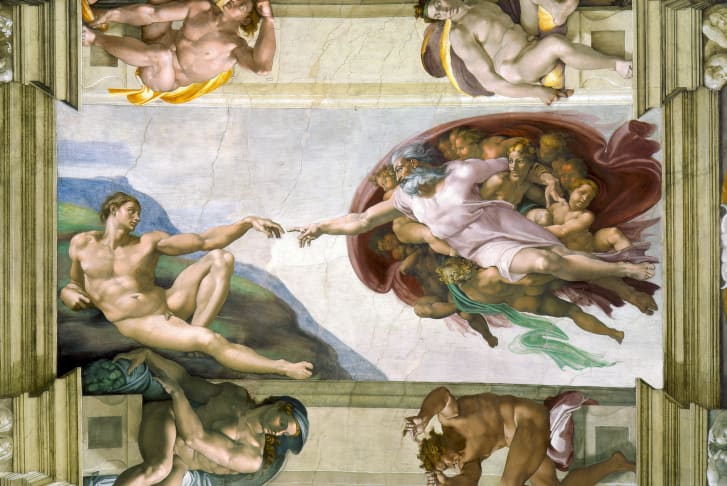
Artist: Michelangelo
Date: 1508 to 1512
Where to see it: Sistine Chapel (Vatican City)
You must gaze up to see Michelangelo’s most well-known piece of art, which is located on a portion of the Sistine Chapel’s ceiling. The image shows God and Adam with their arms extended and their fingers almost in contact. One of the historically most reproduced photographs is this one.
Adam’s toned body is a pointer to Michelangelo’s other skill; his “David” is arguably the most well-known sculpture in history. The Galleria dell’Accademia in Florence is where you can see the enormous marble statue.
Did you know? The Sistine Chapel’s ceiling had become faded from centuries of exposure to candle smoke, among other things. The brilliant, vivid colors Michelangelo originally chose astonished people after a protracted, thorough cleaning that ended in 1989.



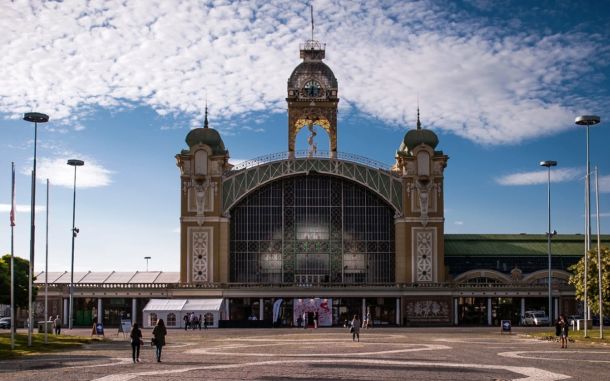

Leave a Reply
You must be logged in to post a comment.